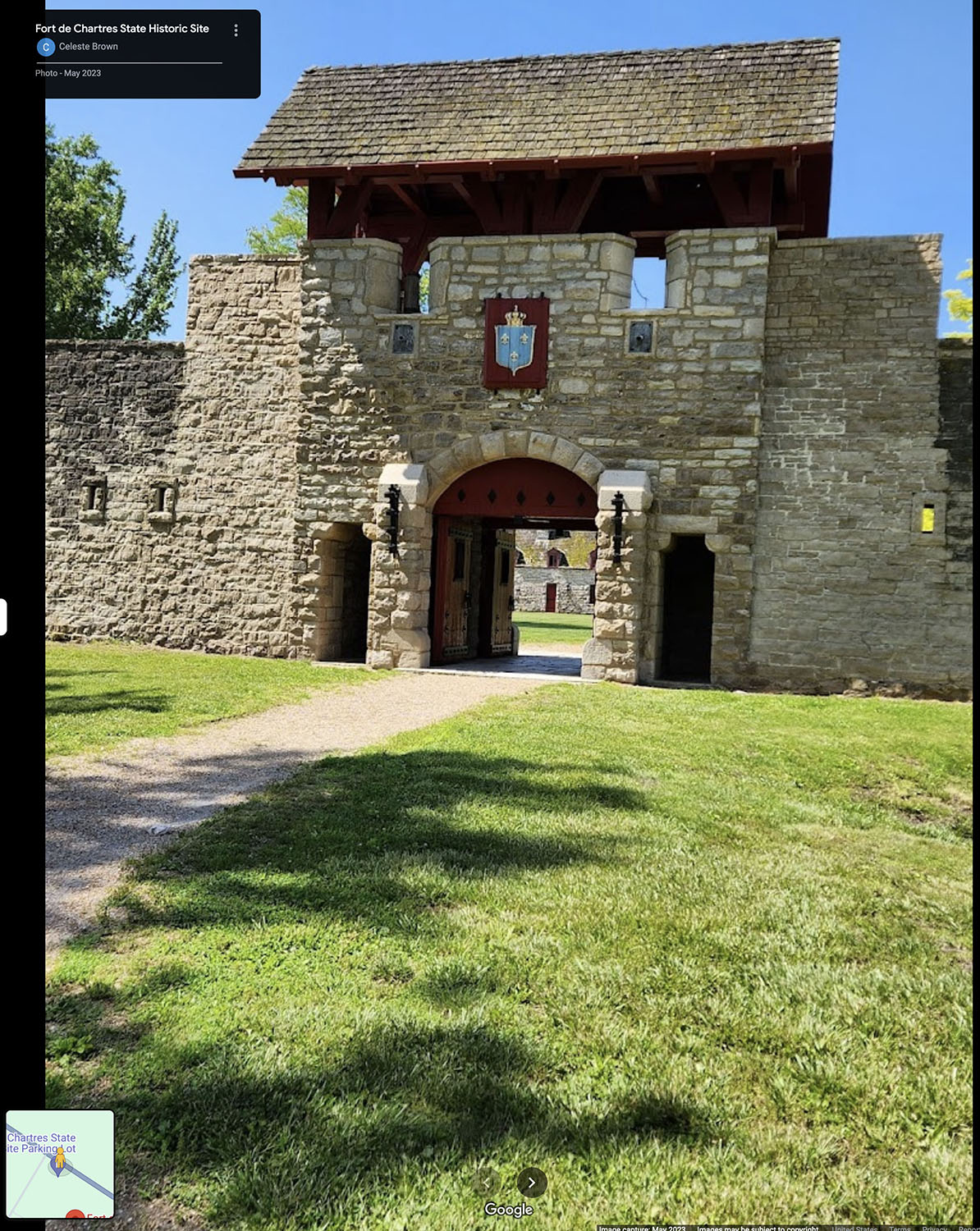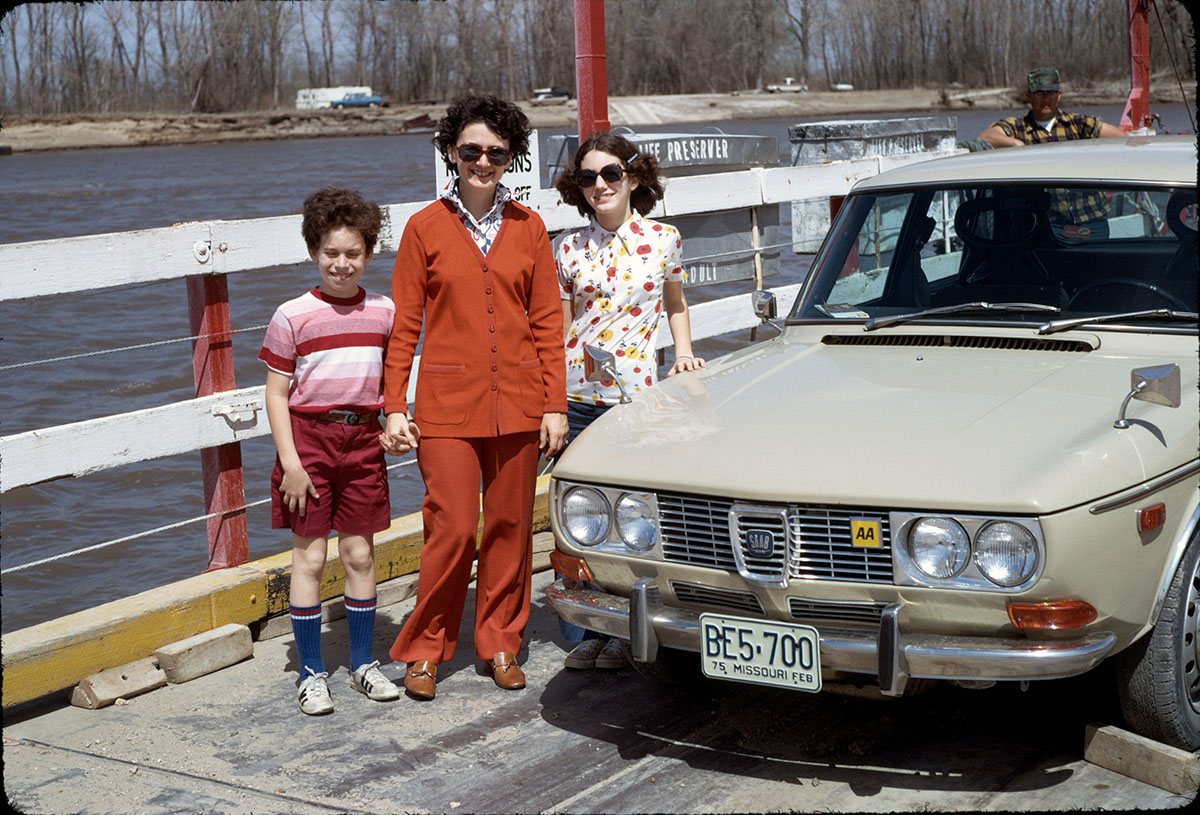May 21, 2024
Intro
I am in the midst of a project to scan all of my father's (Michael's) 35mm slides (current estimate: some 4500 of them).
The first two images shown here are from Michael's roll of slides developed in August 1974, and these are frames #01 and #02. Pretty clearly they were shot on the same day (Rachel and I are in the same outfits). The first image shows us standing next to a stone archway/doorway of a distinctive shape, but with no other identifying information. The second shows the three of us standing next to the tan 1971 Saab 99 on a ferry, but again, no identifying information. No other photos on this roll (nor the previous one) show any images from that day.
The Challenge
But where were these images taken? Neither are such memorable images on their own, but I wanted to see what I could learn.
The first two photos on this page are © 1974 by Michael W Friedlander
(Click any image to view larger.)
The Sleuthing
My mother had mentioned when I showed her this image a few days ago that she thought it might be somewhere not far from St Louis but did not know otherwise.
So, I started with searching for ferries in Missouri (there are only about five, such as St Charles, MO to Grafton, IL, and another in Ste. Genevieve, MO to southern Illinois). I searched for "stone arch Missouri" (which is not helpful when the Gateway Arch shows up in so many searches!). I also searched for stone buildings in both St. Charles and Grafton, and came up empty. Then I started looking around Ste. Genevieve (note: this is an historic town (founded 1735) in SE Missouri, about 70 miles from where I grew up in St. Louis), but doing Google Street View was not productive: nothing was made of stone.
Then I zoomed out just a bit from Ste. Genevieve (see map below), and saw a small circular marker of interest for the Fort de Chartres State Historic Site (Illinois), some distance but not too far from Ste. Genevieve. (It was smaller than this when I first saw it.) I had no knowledge of this place.
Since the tiny image in the icon looked like it could be stone, I then clicked on the icon, and it brought up the photo shown below of the entrance to the fort. There is a main entrance and what might be two guard sentry posts on either side. The right-hand one in the photo is clearly the one from the photo of Rachel and me.

capture of Google Street View of Fort de Chartres, Illinois
The other consequence of discovering that this photo was taken in Illinois is that the ferry photo (since it is the very next frame) must be of us returning to Ste. Genevieve, later in the afternoon. And since the fort entrance faces northeast (3rd link, below), the photo of us at the fort must have been taken late morning, judging by shadows.
Here are the links that helped me figure this all out.
- Google Maps view of Fort de Chartres
- Google Street View , in other words, what you get by clicking on the primary photo in the upper left of the map view.
- Google Maps satellite view of Fort de Chartres, zoomed in
- Google Street View close-up panoramic view of Fort de Chartres entrance
The Answer
Thus the ultimate answer to my originally posed question of where this was taken is that it was Fort de Chartres, Illinois (Wikipedia page). Specifically, it was taken at the right entrance doorway, which has a What3Words location of ///passive.fingernails.human.
[If you are not familiar with it, What3Words,com is a web site where every 10x10 foot spot on Earth can be uniquely identified by three words.]
I was dubious as to whether I could find anything about these images, but the research worked out in less than an hour.
Amazing what one can spin out just from two snapshots!
Technical information about the photos:
- •My father's camera system consisted of a 1961 Pentax S2 single lens reflex (SLR) camera with three fixed focal-length
Pentax lenses: 35mm f/3.5, 55mm f/2.0, and 135mm f/3.5.
This was a manual focus (of course) camera which required an external light meter.
My images and descriptions about the equipment can be found here.
Although I wrote up these details in January, 2017 as I had written other eBay ads, I never actually attempted to sell these items. - •The film was Kodak Kodachrome (assumed ISO 64, but maybe 25?)
- •The original slides were scanned in May 2024 on a Minolta Scan Dual IV film scanner (which gives about 12 megapixels resolution and very good dynamic range).


